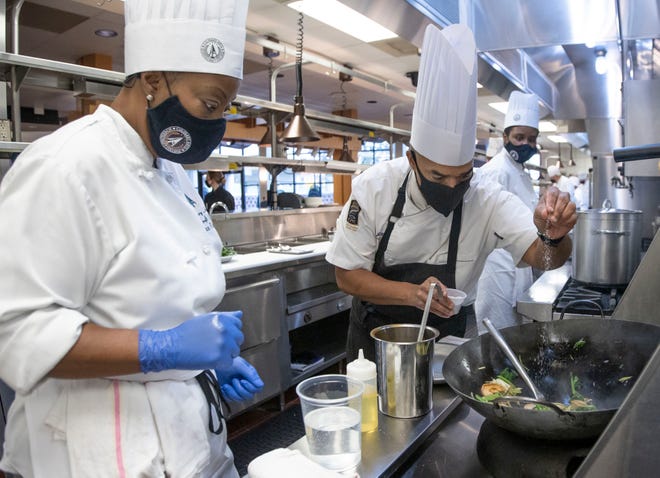Opinion: Donating to community colleges changes lives
By Dawn Magretta | Published 10:35 p.m. ET Dec 22, 2020 in The Detroit News
Go to a university. Pay tuition, books and housing for four or five years. Get a good job.
For years, that was the ideal we presented to our kids. The only way to make it in life was to get a four-year degree and start your career.
But that’s not the case. Nothing is one size fits all. So, what’s the alternative?
For a growing number of adults ages 18 to 80 and beyond, the solution is community college. Whether it’s a high school graduate still trying to figure out a career path, or a small-business owner taking some classes to keep up with technology trends, community colleges offer each unique person a broad opportunity to pursue a dream.

But even though community colleges impact so many, they often do not see the same kind of investment from the public.
To the detriment of Michigan’s economy, communities and taxpayers, there is a massive and inexcusable revenue gap between four-year institutions and community colleges. According to the Center for American Progress, community colleges receive $8,800 less in education revenue per student enrolled than four-year institutions. That translates into a total gap of $78 billion between the two sectors.
We must stop treating two-year colleges like crisp autumn days — something precious that you take for granted until it’s gone. These are essential, not disposable, assets. Community colleges often offer more personalized education. They give opportunities to individuals of lower socioeconomic status that are unable to afford higher tuition. And community colleges do more than just impact students on campus.
Whether it’s a local summer camp or small-business owners getting certifications, these local treasures contribute to thriving communities. Unfortunately, we can’t help but notice the considerable gap in support from the public.
Throughout my years working in the community college environment I’ve seen firsthand the great impact philanthropy has on our school and students. Typically, donor-dollars can go further at community colleges. For example, a $500 scholarship may not be enough to fund one class credit at a university. At Schoolcraft College in Livonia, the same amount of money covers a three-credit class, plus books. All of a sudden, what was a minor donation becomes life-changing for individuals.
Education is key to a community’s economic viability, but not all education looks the same. Studies show that post-high school education leads to higher-paying jobs, but that does not mean a four-year degree is the only way. Post-high-school education looks different for everyone — from certificates to two-year degrees to Ph.D. programs. Despite community colleges offering broader opportunities, they are still frequently overlooked when it comes to philanthropy.
In Michigan, community colleges are supported by property taxes and tuition. This revenue allows the schools to provide services like classes, labs and other basics. Still, donations will enable a community college to invest in individuals and support a thriving campus.
Higher education isn’t one size fits all. It’s for the single mom of three getting her degree, for the high school graduate unsure where he or she wants to go in life, and for the 60-year-old small business owner looking to get a new certification. Consider a donation to your local community college, because it is sure to change lives.
Dawn Dyer Magretta is the executive director of Schoolcraft College Foundation.
